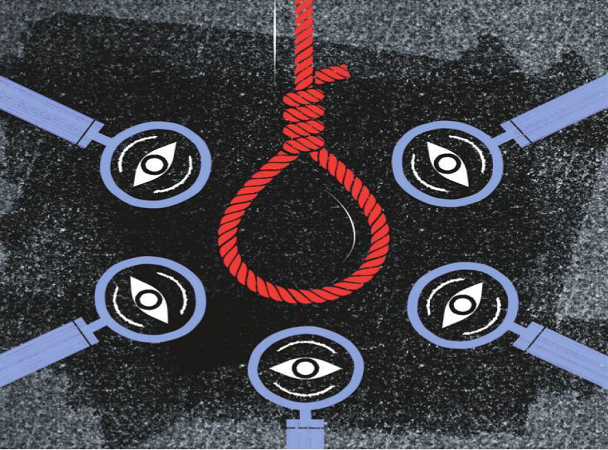
Anup Surendranath

Maitreyi Misra
This article was first published in The Indian Express and can be accessed here.
The Supreme Court has done well to acknowledge that capital punishment needs closer scrutiny and referring the matter to a five-judge bench. The problem that the Supreme Court’s reference to a Constitution Bench seeks to remedy is the need to achieve consistency on the requirements of a fair, meaningful and effective sentencing hearing
Forty-two years ago, the Supreme Court took the view that the death penalty did not violate the Constitution and prescribed a framework it hoped would ensure fairness in sentencing. The Court has now come full circle in confronting the reality that death penalty sentencing has been anything but fair. In a momentous ruling last week, the Supreme Court has said that fundamental aspects of death penalty sentencing need re-examination and resolution by a Constitution Bench of five judges. Four decades and over 400 judgments after Bachan Singh v State of Punjab (May 1980), a three-judge bench has had the judicial courage to acknowledge that there are serious problems in India’s death penalty regime, indicating that the current state of death penalty sentencing is untenable.
While approving the constitutional status of the death penalty in May 1980, the Supreme Court was acutely aware that it had to ensure that the imposition of death sentences did not become an arbitrary and subjective exercise in individual cases. In determining which individuals the law could subject to death in a fair manner, it was integral that the sentencing judges were deciding according to the law and not on their individual whim. Concerned with fairness, Bachan Singh proposed a sentencing framework towards ensuring that the sentencing judge’s discretion to choose between life imprisonment and the death sentence was guided by considerations that were relevant to the law. Before imposing the death sentence, Bachan Singh required the court to weigh the aggravating and mitigating circumstances (popularly known as the “rarest of rare” case) and determine whether the option of life imprisonment is “unquestionably foreclosed”.
Over the years, multiple concerns have emerged with this framework. The courts have taken differing approaches in which factors are relevant to sentencing, how best to bring in factors relevant to punishment, the ability of poor defendants to bring in such information, the weightage sentencing factors must receive, and the contentious role of public opinion. The problem that the Supreme Court’s reference to a Constitution Bench seeks to remedy is the need to achieve consistency on the requirements of a fair, meaningful and effective sentencing hearing.
This is not the first time that the Supreme Court has noticed that all is not well with the Bachan Singh framework. In 2009, in Santosh Kumar Bariyar v State of Maharashtra, Justice S B Sinha expressed concern about the lack of uniformity in death penalty sentencing. In 2018, Justice Kurian Joseph in his minority opinion in Channu Lal Verma v State of Chhattisgarh called for a relook at the constitutional possibility of the death penalty because of the arbitrariness that had crept in. Periodically, others too have brought out this flaw. Lethal Lottery in 2008, and the 262nd Law Commission of India Report in 2015, underscored the inconsistencies in the Supreme Court’s approach to death penalty sentencing. The Law Commission recommended abolition due to the irresolvable arbitrariness inherent in death penalty law. In 2020, Project 39A’s doctrinal study of trial court judgments from 2000-2015 evidenced the inconsistencies in the application of the framework, which often arose from the confusion embedded in the framework. It also highlighted that trial courts were far too often imposing death sentences without considering any mitigating circumstances. We have known long since that Bachan Singh’s hope of fairness was nowhere near being realised. Yet we continued unmoved.
In a series of recent judgments over the last year, two benches of the Supreme Court have repeatedly noticed that courts below it have been sentencing accused persons to death without having sufficient material regarding them There are structural and systemic reasons for this. The reality is that in death penalty cases, the accused are more often than not poor, can ill-afford quality legal representation, and scarcely have the resources to put before the Court meaningful mitigation information. In addition to the lack of time, there is the additional disadvantage that the accused face where they are simply not in a position to produce relevant mitigating factors. In this background, Bachan Singh’s hope rings hollow.
To address the problem of lack of mitigation information, one bench of the Supreme Court repeatedly called for a probation officer’s report, jail conduct report and a psychological evaluation of the accused, while another bench was deeply resistant to this idea. This speaks to the absolute lack of clarity on how death penalty sentencing should be done. We currently have a situation where one judgment of the Court (Manoj & Ors v. State of MP) set in place practical guidelines to ensure that courts have sufficient material on the accused before delivering a sentence of death at every stage of the judicial process. At the same time, there is another judgment (Manoj Pratap Singh v. State of Rajasthan), which is suspicious of this process, deems it unnecessary and, on the whole, entirely misunderstands essential aspects of death penalty sentencing. This is only the most recent instance in a long line of cases where there are contradictions in the Supreme Court’s death penalty jurisprudence and the approach to sentencing has been divergent. The jurisprudence is now too disparate for it to continue in the same vein. The Court has now set for itself the task to mend this divide, and begin afresh the project of ensuring fairness in death penalty sentencing.
Achieving fairness in sentencing necessarily requires that the accused be given time and resources to gather and present such information in every single case and at every judicial stage. Concerns about the lack of resources and capacity must not be allowed to trump in a process which seeks to take life through the law. It also necessarily requires guarding against the deep suspicion and implicit bias that accused persons often face when asking for their right to place their story on record. This intangible but all too real disadvantage must also be addressed by any process striving for fairness.
This year, 122 people have already been sentenced to death by trial courts. The challenge before the Supreme Court is enormous in a criminal justice system like ours. This reference order is in many ways the Supreme Court acknowledging that we can’t declare the death penalty to be constitutional and then administer it an unconstitutional manner. The reference to the Constitution Bench is then another attempt at infusing the death sentence process with the values of fairness and non-arbitrariness. The Court is (perhaps quixotically) hopeful that the serious problems with the death penalty regime can be fixed. However, the sheer lack of capacity and resources that plague our barely held-together criminal justice system betray its ability to be fair.
Project 39A’s application for mitigation access was converted into the suo motu writ which has resulted in the reference order.






[…] Deciding the Rarest of the Rare […]